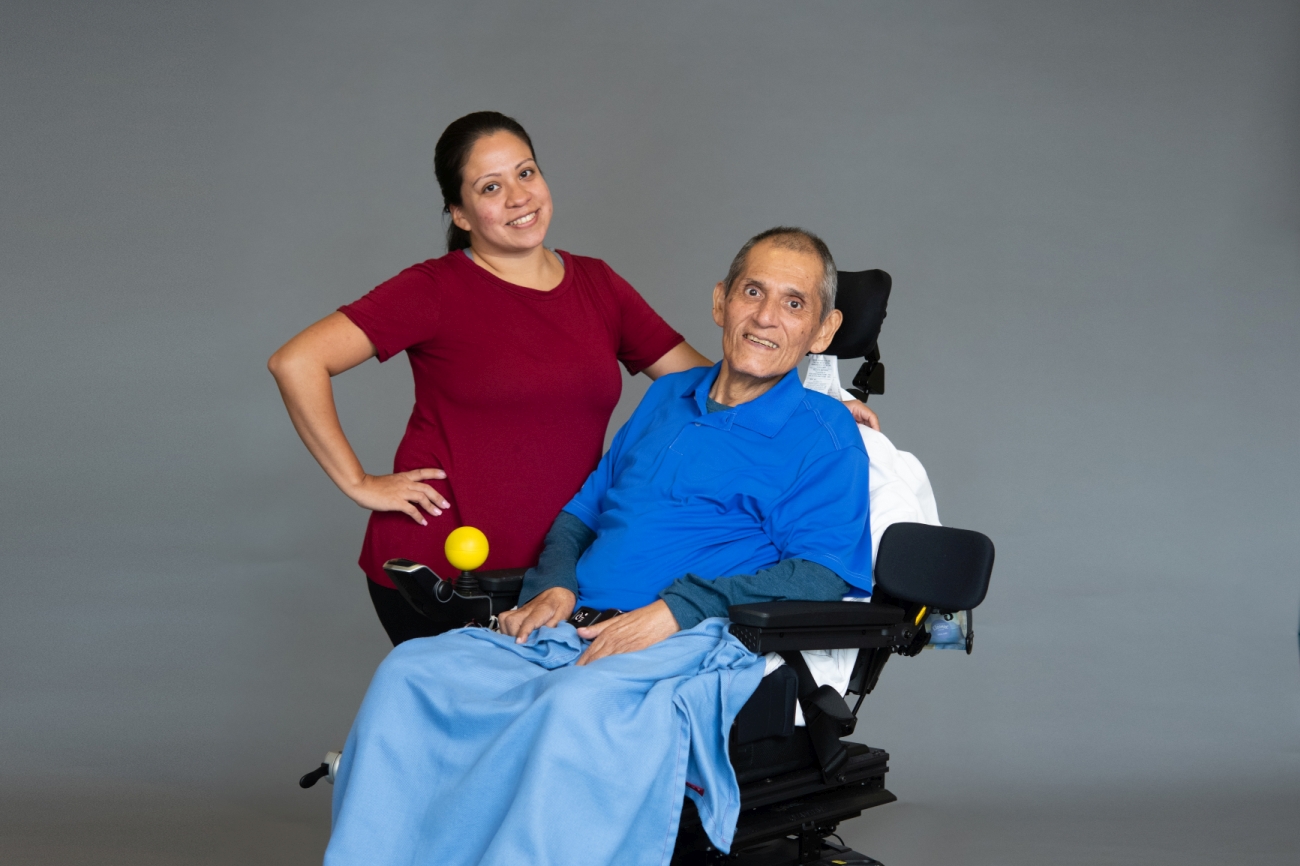At a glance
The National Amyotrophic Lateral Sclerosis (ALS) Registry uses a novel approach to link persons with ALS (PALS) to scientists conducting research with the goal of slowing disease progression and getting closer to a cure.

Slowing down disease progression
"If we can figure out what causes it, we can figure out what drugs can mitigate and possibly prevent ALS."
— Paul Mehta, MD, principal investigator, National ALS Registry
The National ALS Registry by the numbers:
- An estimated 17,800 to 31,843 adults in the United States were living with ALS in 2017 (prevalence: 5.5–9.9 persons per 100,000 population), with a mean of 24,821 cases (7.7 persons per 100,000 population).
- More than 50 domestic and international institutions have used the Registry to recruit thousands of PALS to participate in more than 65 clinical trials and epidemiological studies to date.
- 18 different online surveys are currently available through the Registry to help identify ALS risk factors. At least 100,000 surveys have been completed to date.
- More than 60,000 specimens (e.g., blood, hair) have been collected nationally from more than 1,400 living PALS and more than 180 autopsies* (e.g., tissue, bone) have been conducted for the National ALS Biorepository *in partnership with the Johns Hopkins ALS postmortem program.
- The Registry has funded 21 research grants to date.
- More than 88 Registry articles have been published in peer-reviewed journals.
How the Registry works
The National ALS Registry, launched in 2010 and maintained by ATSDR, is a program that collects and analyzes data about PALS and connects those persons with ALS resources. It includes data from existing national databases (e.g., Centers for Medicare and Medicaid Services and Veteran Affairs) and voluntary information provided by PALS.
Although most people assume a registry is there to collect numerical data, Paul Mehta, MD, principal investigator of the National ALS Registry, highlights its uniqueness:
"The Registry does more than just count cases," Mehta said. "We want to figure out what causes ALS and how to mitigate, prevent, or better treat it." The Registry is actively working to determine the risk factors for ALS to better understand the roles of genetics, disease progression, and environmental exposures. The Registry works toward this goal daily in a variety of ways:
- Serving as a biorepository of nationally representative specimens to be matched with Registry risk factor data.
- Overseeing the epidemiology of ALS by collecting data on incidence, prevalence, mortality, risk factors, and demographics.
- Examining environmental exposures to toxicants (e.g., heavy metals, herbicides, insecticides).
- Funding R01 research project grants and other academic researchers focused on ALS.
- Partnering with national ALS associations and organizations to promote the existence and importance of the Registry.
One of the most important ways the registry contributes to the fight against ALS is by using the Research Notification System to connect patients with clinical trials.
"ALS patients are altruistic and caring individuals," Mehta said. "They may know there is not a cure for them right now, but they want to help those in the future."
To date, the life span of PALS is typically 2–5 years from diagnosis. The two treatments currently approved by the Food and Drug Administration (FDA) only prolong lives for 2–3 months on average. "These patients become our friends, they come to meetings, and then they unfortunately succumb to this terrible disease. It is heartbreaking," says Mehta. "This Registry is for them and their families."
Most patients and drug companies express positive feedback about the Research Notification System. In fact, most current and former drugs used to treat ALS have used the Registry at one time or another for recruitment support. This notification system, and the Registry as a whole, are free for all research institutions to use.
The Registry is a novel way to expand research and explore the unknowns of ALS. "We are hopeful that one of these clinical trials will help patients significantly slow, stop, or reverse their disease progression," Mehta said.
While the goal of the Research Notification System is to be able to work with private institutions and academia to further this research, the Registry seeks to make a difference and add to the body of knowledge of ALS research. As one of ATSDR's most prolific groups publishing in the peer-reviewed literature, the Registry is eager to add to the ALS knowledge base to get closer to a cure.
"We are one piece of the ALS puzzle and are making a difference in the lives of people with ALS," Mehta said. "This Registry belongs to the patients, and we are its humble caretakers."

